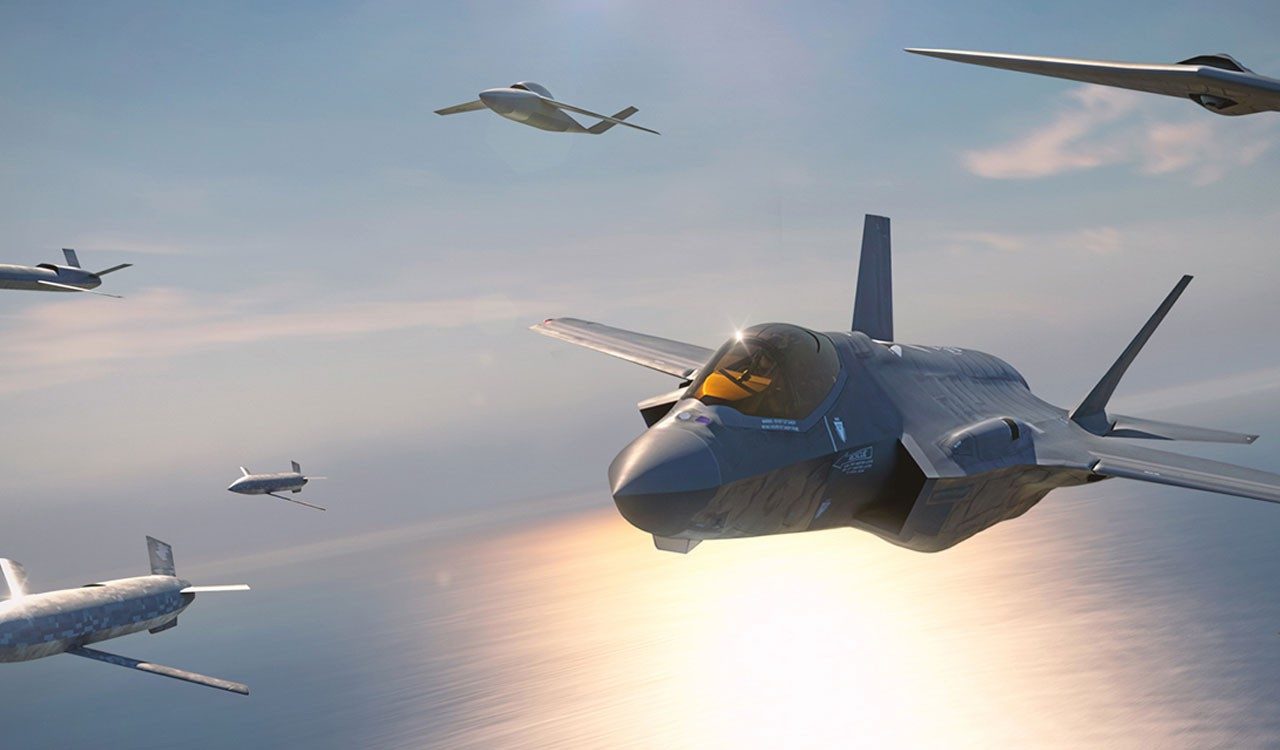Most Advanced And Expensive Military Program
Joint Strike Fighter
1. Role and Missions: The F-35 is designed to perform a wide range of missions, including air superiority, ground attack, reconnaissance, and electronic warfare. It is intended to be a versatile and highly capable aircraft for both air-to-air and air-to-ground operations. 2. Design and Construction: The F-35 features a stealthy design with smooth contours and angled surfaces to reduce its radar signature. It is constructed primarily of composite materials, such as carbon fiber-reinforced polymers, to enhance its strength and reduce its weight. The F-35 can carry a wide range of weapons, including air-to-air missiles, air-to-ground missiles, guided bombs, and precision-guided munitions. It also has an internal weapons bay to maintain its stealth profile. 3. Engine: The F-35 has a top speed of Mach 1.6 (1,200 mph) and a combat radius of over 500 nautical miles. It has advanced maneuverability capabilities, including high angle of attack and thrust vectoring. The F-35 is powered by a single engine, the Pratt & Whitney F135, which provides the aircraft with supersonic speed and high maneuverability. The engine's thrust vectoring capability allows the F-35 to perform tight turns and maneuvers. 4. Sensor Fusion: One of the key features of the F-35 is its advanced sensor fusion capability. The aircraft's sensors, including radar, electro-optical systems, and electronic warfare systems, gather information and feed it into a central computer system. This system combines and analyzes the data to provide the pilot with a comprehensive picture of the battlefield. 5. Helmet-Mounted Display System (HMDS): The F-35 utilizes an advanced helmet-mounted display system that provides pilots with real-time information, including flight data, targeting information, and situational awareness. The HMDS allows pilots to see through the aircraft's structure using cameras and sensors, enhancing their situational awareness during combat. 6. Autonomic Logistics Information System (ALIS): The F-35 incorporates an advanced logistics system called ALIS. ALIS collects and analyzes data from the aircraft to monitor its performance, track maintenance needs, and optimize operations. It enables predictive maintenance and reduces the overall maintenance workload.
7. International Sales: In addition to the partner countries involved in the F-35 program, several other nations have expressed interest in acquiring the aircraft. These include Japan, South Korea, Belgium, Finland, Singapore, and others. The F-35's advanced capabilities and interoperability make it an attractive option for many air forces around the world. 8. Continuous Development: The F-35 program is an ongoing effort, with continuous development and improvement of the aircraft's capabilities. Updates and upgrades are regularly implemented to enhance performance, address technical issues, and incorporate new technologies. 9. Training: The F-35 requires specialized training for pilots and ground crews due to its advanced systems and capabilities. Training programs have been established to ensure personnel are proficient in operating and maintaining the aircraft effectively. 10. Future Variants: The F-35 comes in three main variants: the F-35A, which is a conventional takeoff and landing (CTOL) version for the U.S. Air Force; the F-35B, which is a short takeoff and vertical landing (STOVL) version for the U.S. Marine Corps; and the F-35C, which is a carrier-based version for the U.S. Navy. The F-35 program is expected to continue evolving with the development of future variants. These may include unmanned versions of the aircraft, enhanced electronic warfare capabilities, and other advancements to meet evolving operational requirements. Overall, the F-35 represents a significant leap forward in fighter aircraft technology, incorporating advanced stealth, sensor fusion, and networking capabilities. While it has faced challenges and controversies throughout its development, it remains a critical asset for modern military operations.
The Fifth Wonder Of The Ancient World
The Temple of Artemis
1. Historical Background: It was built in the 6th century BCE to honor the Greek goddess Artemis, who was the goddess of hunting, wilderness, and fertility. The construction of the temple was commissioned by King Croesus of Lydia and it took several years to complete. 2. Architectural Style: The architec...


